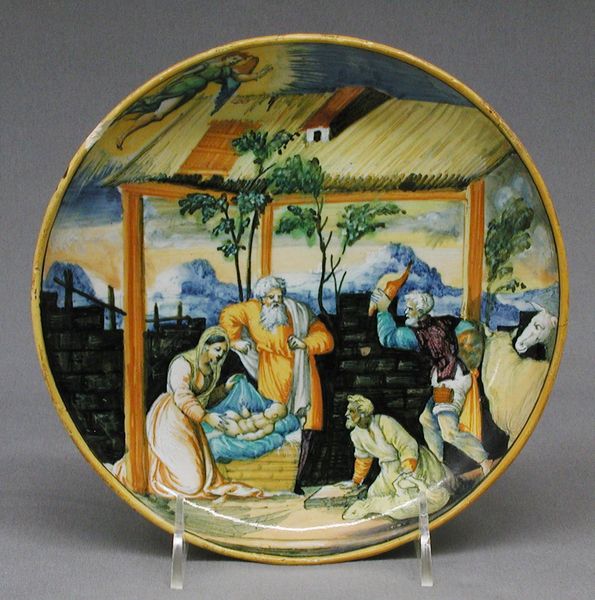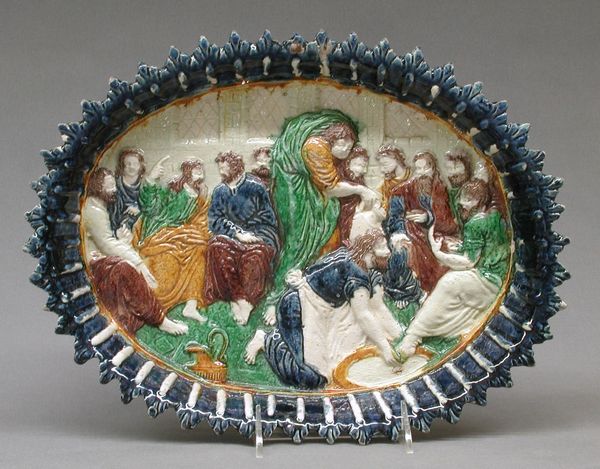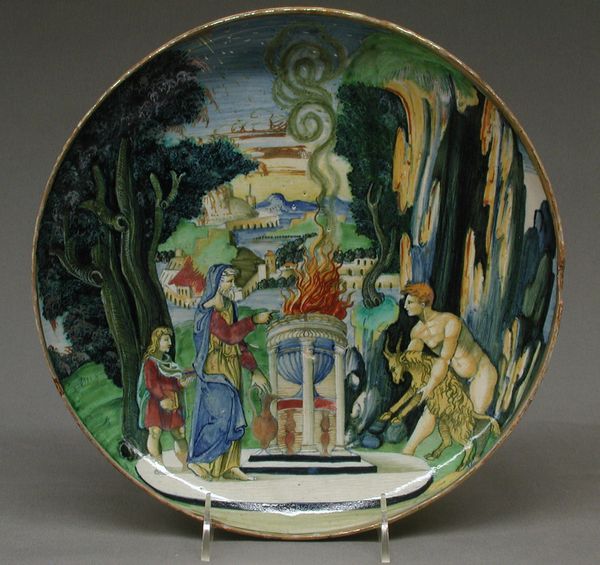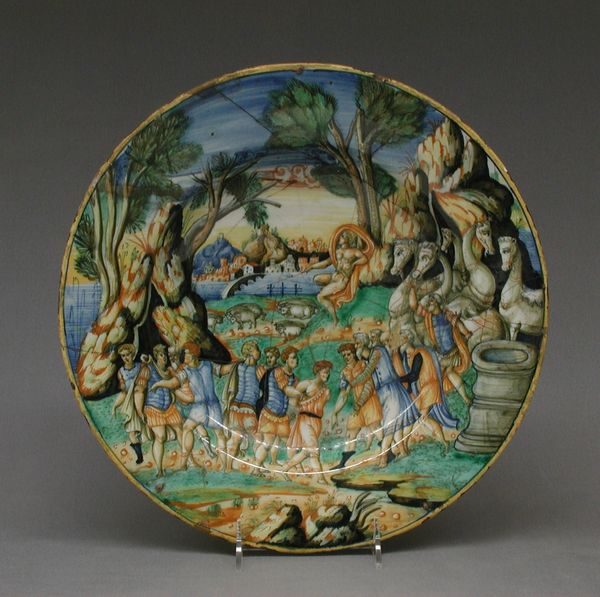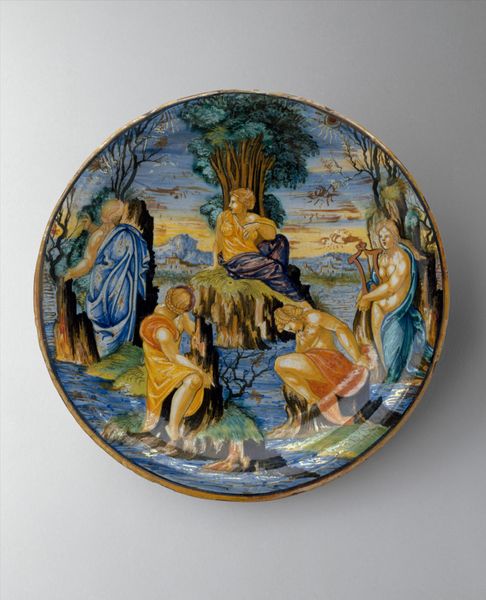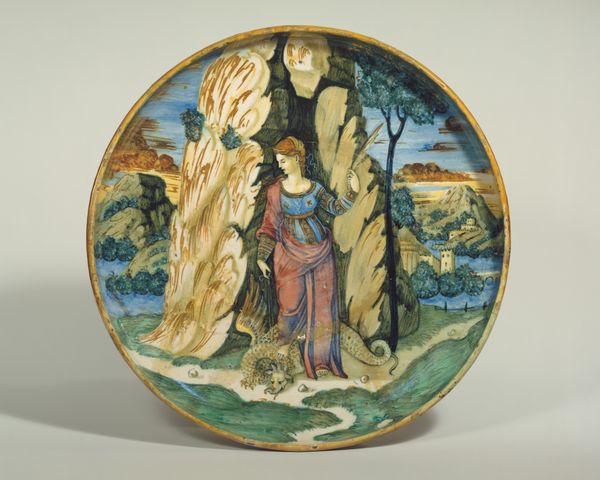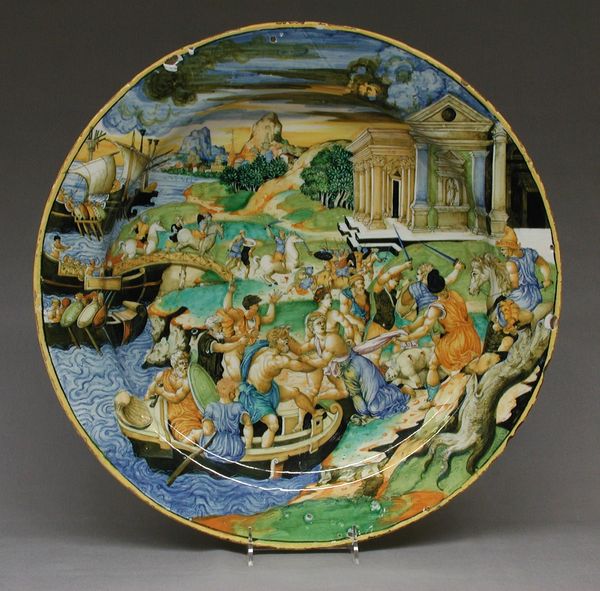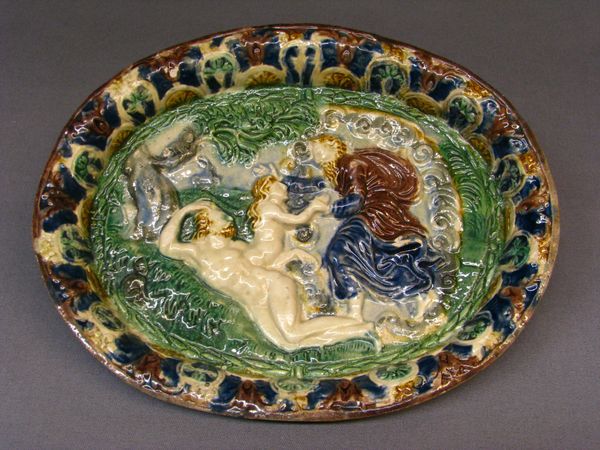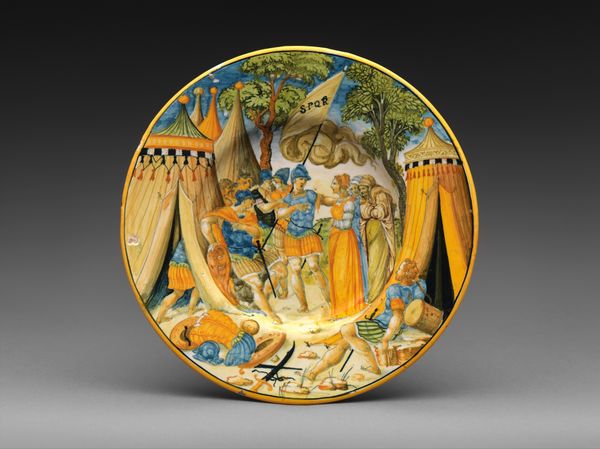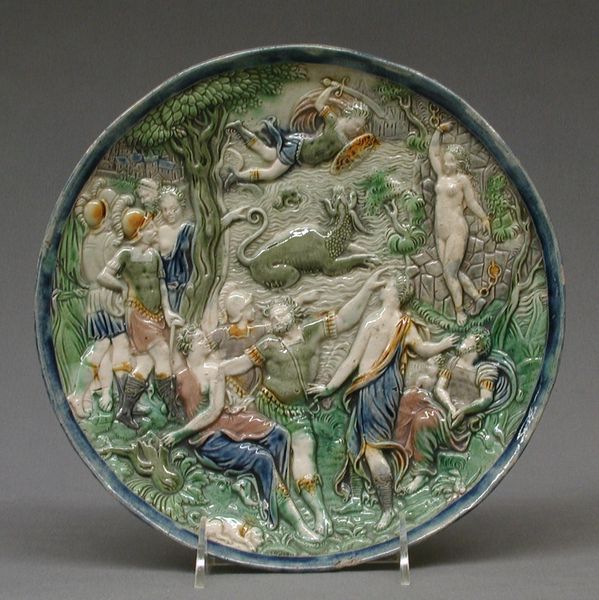
painting, ceramic, earthenware, sculpture
#
narrative-art
#
painting
#
ceramic
#
figuration
#
oil painting
#
earthenware
#
sculpture
#
earthenware
#
history-painting
#
decorative-art
#
italian-renaissance
#
christ
Dimensions: Diameter: 10 3/4 in. (27.3 cm)
Copyright: Public Domain
Curator: At first glance, this is visually striking; it is theatrical. Is it an oil painting? Editor: It certainly appears to be, but this object before us is actually a painted ceramic dish made by Fra Xanto Avelli da Rovigo around 1536, titled "The Entombment of Christ," and it currently resides in the Metropolitan Museum of Art. Curator: Ah, Maiolica! Its function as a utilitarian object complicates it. Here, it carries echoes of Italian Renaissance painting; a traditional composition representing a powerful biblical narrative in a contemporary object made for the wealthy. Editor: Absolutely. The placement of this scene upon something we eat from, how does that position the consumer and this sacred, tragic scene? Does it desensitize or, conversely, make it hyper-visible to an elite class of diners? We must interrogate the context: Who had access to this and how was it meant to be interpreted? Curator: Yes, this symbolism layered onto the everyday, but here, the everyday becomes sacred. Think about the iconographic language at play; we see this visual vocabulary present across cultures from devotional painting to byzantine iconography. The swooning Virgin, the mourners gathered round. The potent display of grief acts almost as a relic, to evoke pity. Editor: Right, that shared humanity transcends religious doctrine. Although Christ's suffering has deep spiritual significance to some viewers, others can see his suffering as a potent image to the pain inflicted on marginalized bodies. We consider contemporary forms of state-sanctioned violence and those symbols echo with undeniable clarity and that is how the memory lives in symbols. Curator: The continuous cultural connection becomes all the more compelling. It offers, in effect, an insight into collective consciousness and a continuous visual record of grief. Editor: Indeed. And this bowl's unique function underscores how these images live within our spaces. I think the painting serves as a focal point not just for the diners, but also for the collective cultural history we all share.
Comments
No comments
Be the first to comment and join the conversation on the ultimate creative platform.
